
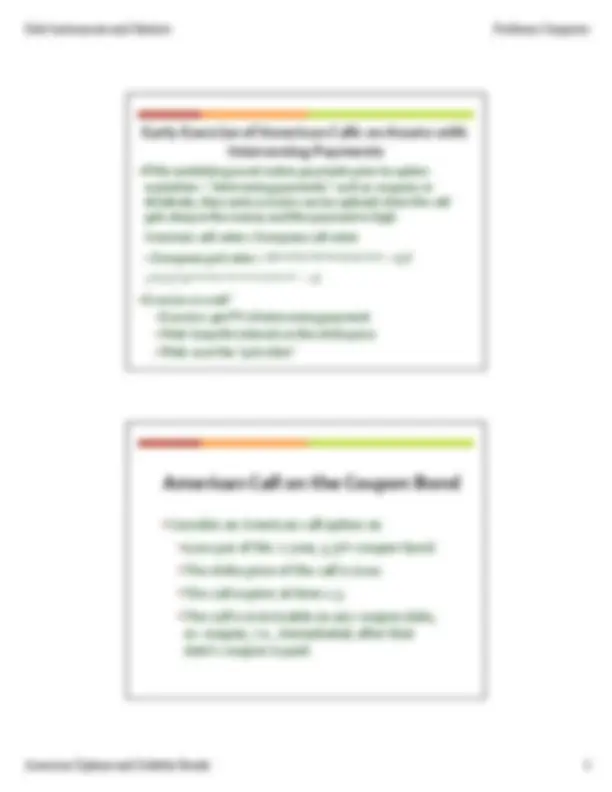
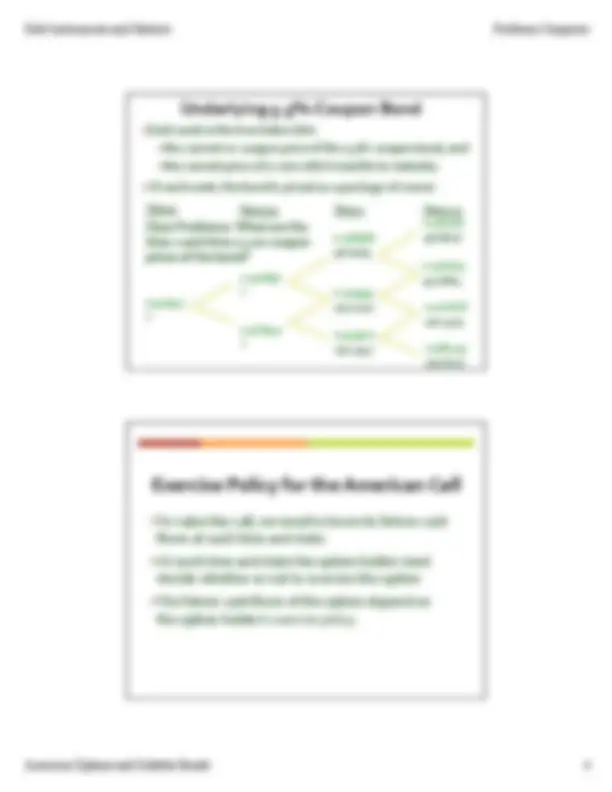
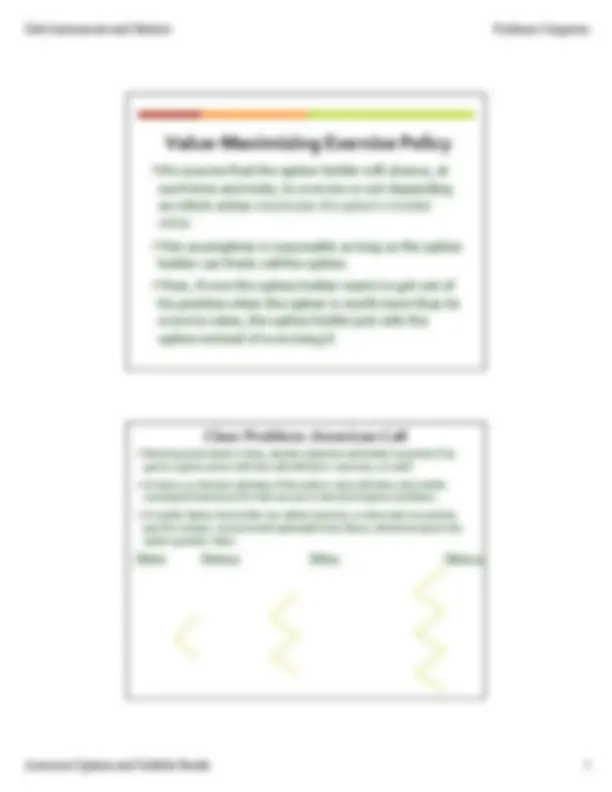
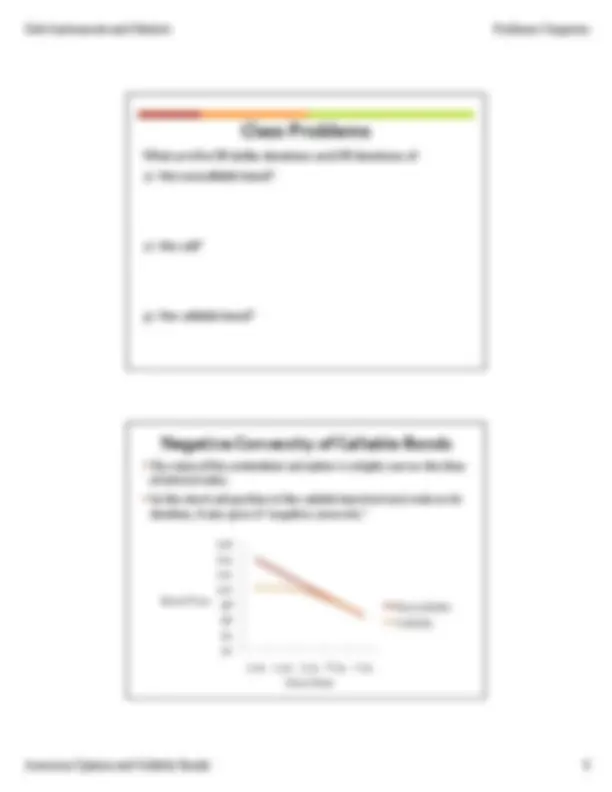
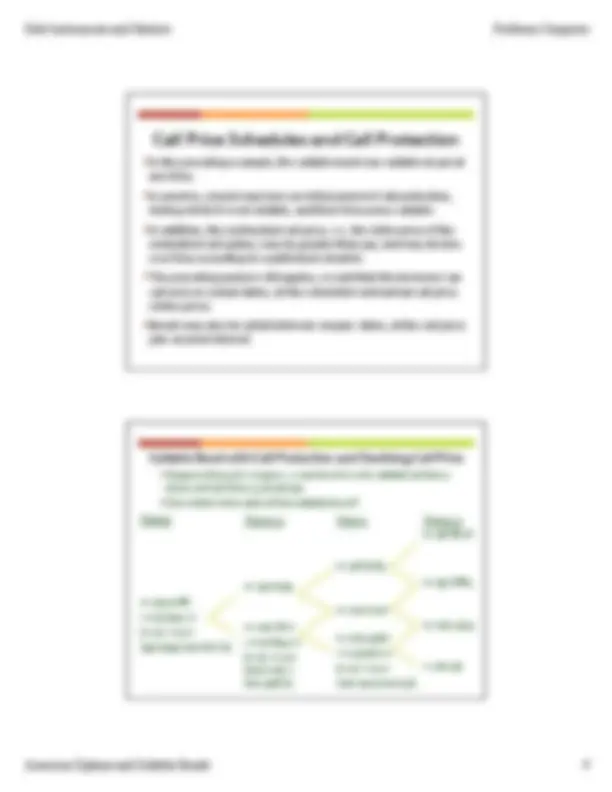
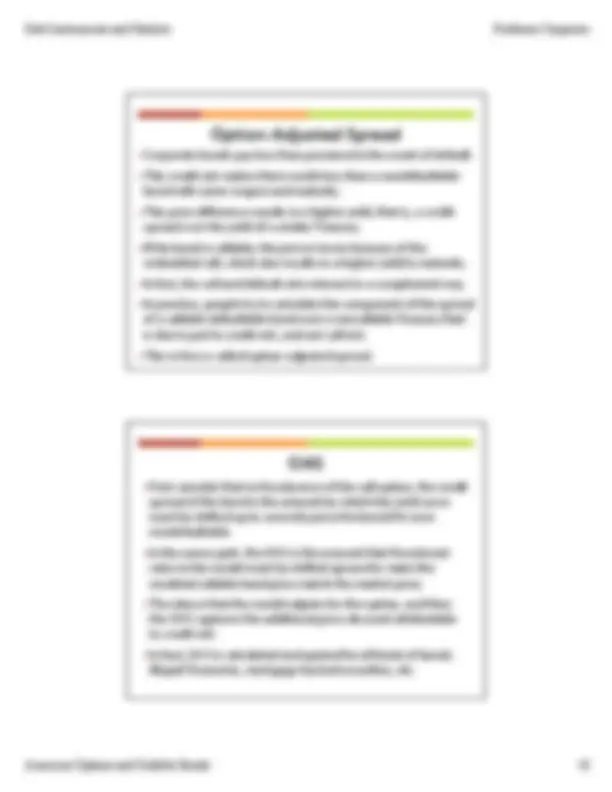


Study with the several resources on Docsity

Earn points by helping other students or get them with a premium plan


Prepare for your exams
Study with the several resources on Docsity

Earn points to download
Earn points by helping other students or get them with a premium plan
Community
Ask the community for help and clear up your study doubts
Discover the best universities in your country according to Docsity users
Free resources
Download our free guides on studying techniques, anxiety management strategies, and thesis advice from Docsity tutors
An in-depth analysis of American Options and Callable Bonds, focusing on their valuation, exercise policies, and the impact of intervening payments. concepts such as early exercise, callable bonds, and option-adjusted spread. It also includes class problems for further study.
Typology: Exams
1 / 10

This page cannot be seen from the preview
Don't miss anything!







American Options
No Early Exercise of Calls on Assets that Have No Payments Prior to Expiration:
Underlying 5.5%‐Coupon Bond
Time 0 Time 0.5 Time 1
?
?
Time 1.
Exercise Policy for the American Call To value the call, we need to know its future cash flows at each time and state. At each time and state the option holder must decide whether or not to exercise the option The future cash flows of the option depend on the option holder's exercise policy.
Value‐Maximizing Exercise Policy We assume that the option holder will choose, at each time and state, to exercise or not depending on which action maximizes the option's market value. This assumption is reasonable as long as the option holder can freely sell the option. Then, if ever the option holder wants to get out of his position when the option is worth more than its exercise value, the option holder just sells the option instead of exercising it. Working backwards in time, decide what the call holder would do if he got to a given point with the call still alive—exercise, or wait? At time 1.5, the last call date, if the option were still alive, the holder would just exercise it if in the money or else let it expire worthless. At earlier dates, the holder can either exercise, or else wait one period, pay the coupon, and proceed optimally from there, whichever gives the option greater value. Class Problem: American Call Time 0 Time 0.5 Time 1 Time 1.
Working backwards, decide what the issuer would do to minimize the cost (pv) of debt if he got to a given point with the bond still outstanding. The issuer’s choices are to either call the bond and pay par, or leave it outstanding for another period, pay another coupon, and then proceed with optimal debt service from there. Class Problem: Callable Bond Time 0 Time 0.5 Time 1 Time 1. Another Way to See Callable = Noncallable – Option: See Refunding Profit as Option Exercise Value
Class Problems
Negative Convexity of Callable Bonds
Option‐Adjusted Spread
OAS